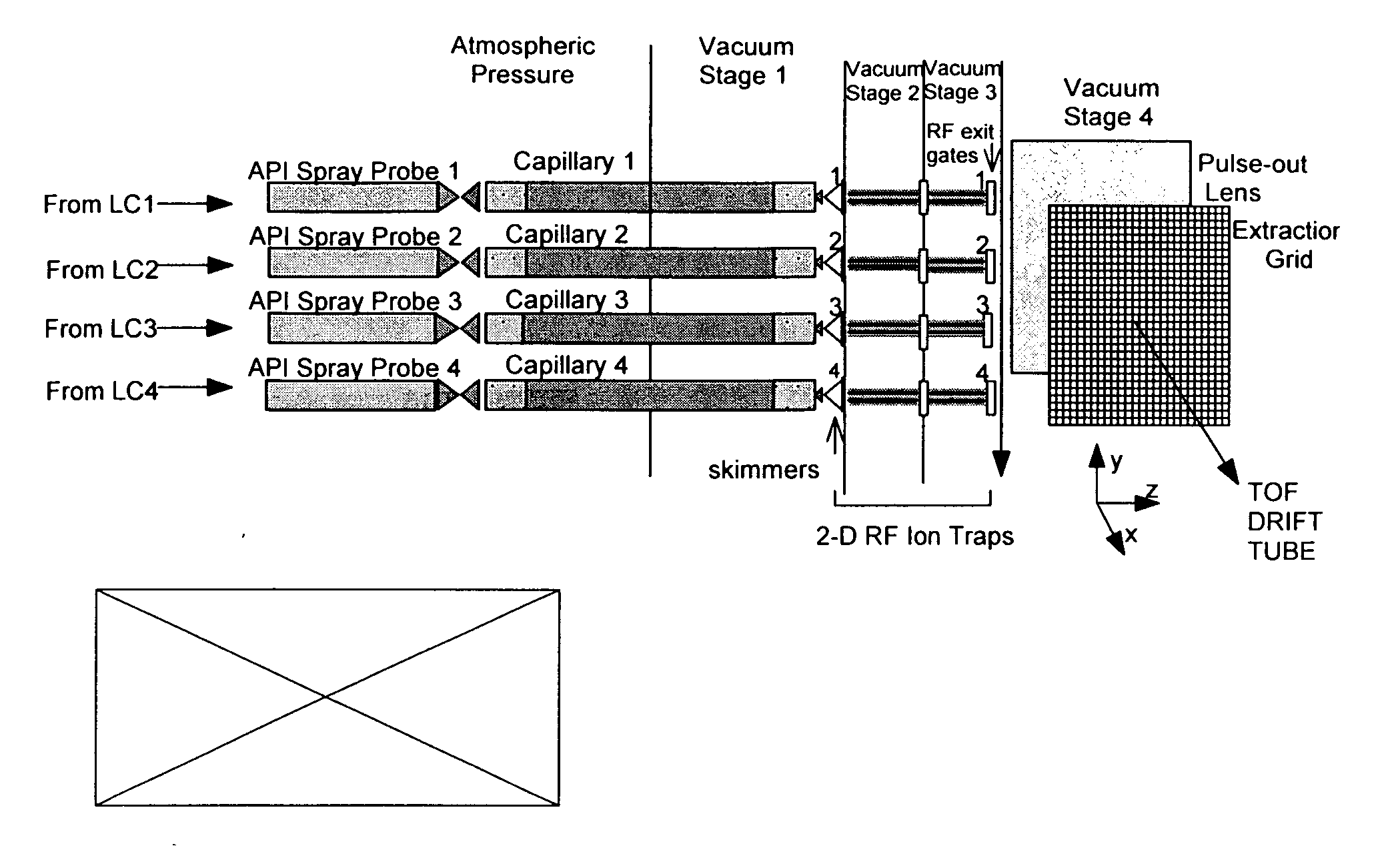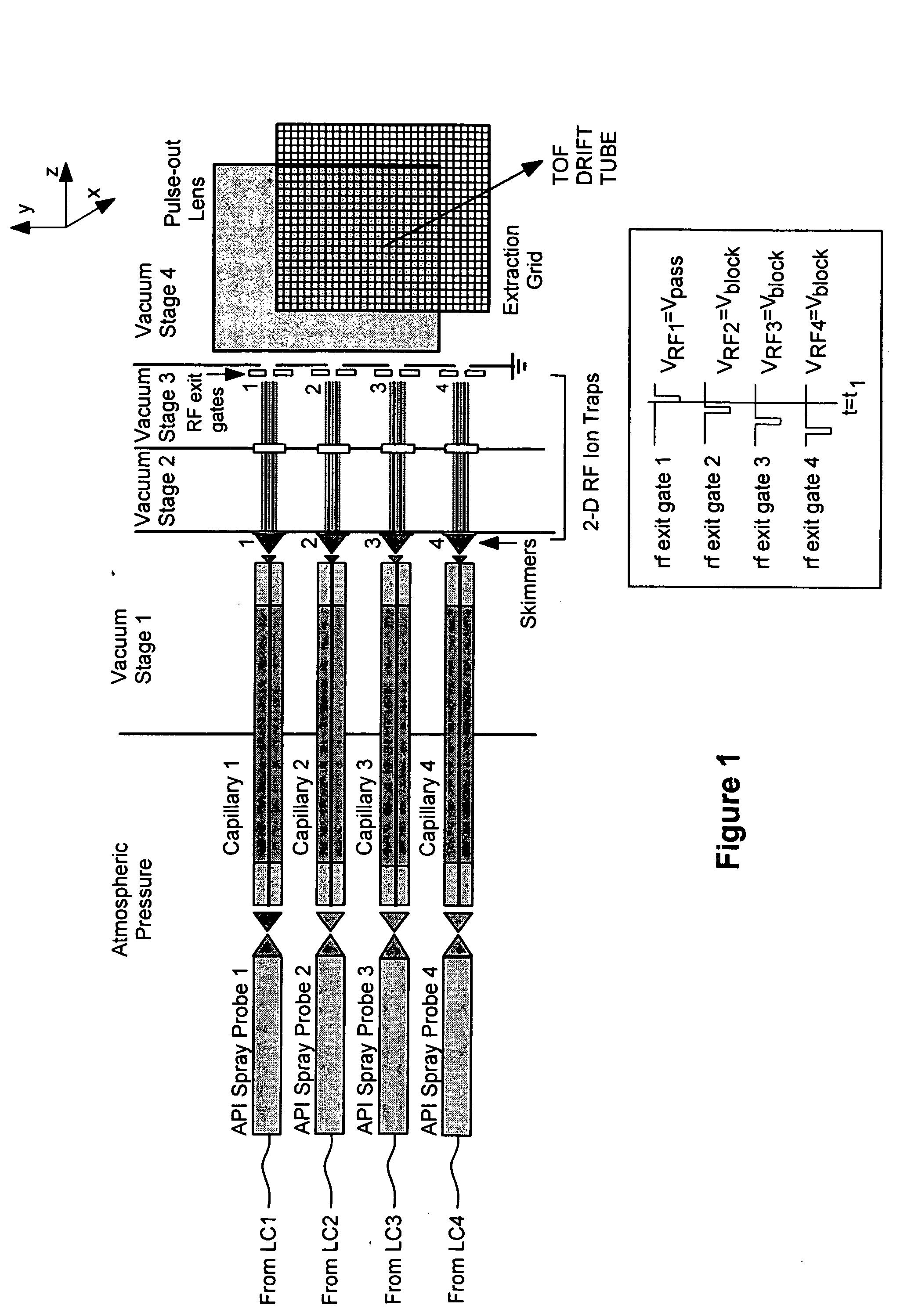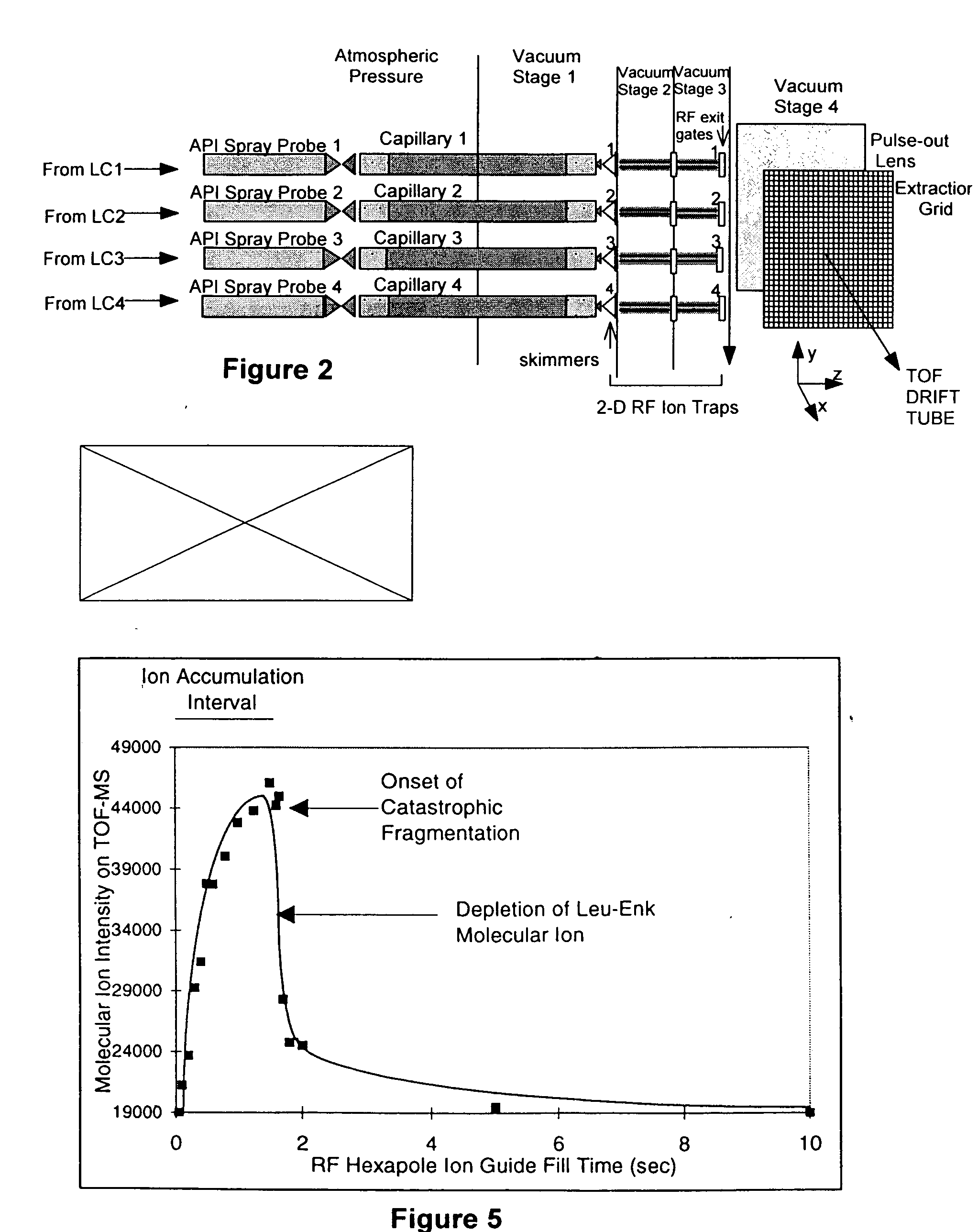Method and apparatus for multiplexing plural ion beams to a mass spectrometer
a mass spectrometer and multiplexing technology, applied in the field of mass spectrometers, can solve the problems of inefficient use of ions created by direct coupling of continuously operating ion sources to time-of-flight mass spectrometers, uncompromised chemical data, and high overall sample throughput, so as to achieve high throughput and high resolution. , the effect of fast detection
- Summary
- Abstract
- Description
- Claims
- Application Information
AI Technical Summary
Benefits of technology
Problems solved by technology
Method used
Image
Examples
Embodiment Construction
[0071]FIG. 1 shows an arrangement for conducting mass spectrometric analysis on multiple ion sources using a preferred embodiment of the invention. In this case a number of samples are simultaneously injected onto the same number of liquid chromatography columns for separation of their individual constituents. Each of these sample streams elute and are transferred in line to its own atmospheric pressure ionization source. These API ion sources are oriented to allow high transfer efficiency of ions between each ionization probe and its respective vacuum orifice. Likewise, each of these sprayer-orifice pairs is set a suitable distance apart to prevent the migration of ions from, for example, probe A towards orifice B, which would lead to erroneous mass spectral data in mass spectrum B by falsely indicating the presence of a compound from chromatograph A. Each of the API devices converts its respective sample stream into charged particles which are suitable for transfer into a vacuum s...
PUM
 Login to View More
Login to View More Abstract
Description
Claims
Application Information
 Login to View More
Login to View More - R&D
- Intellectual Property
- Life Sciences
- Materials
- Tech Scout
- Unparalleled Data Quality
- Higher Quality Content
- 60% Fewer Hallucinations
Browse by: Latest US Patents, China's latest patents, Technical Efficacy Thesaurus, Application Domain, Technology Topic, Popular Technical Reports.
© 2025 PatSnap. All rights reserved.Legal|Privacy policy|Modern Slavery Act Transparency Statement|Sitemap|About US| Contact US: help@patsnap.com



